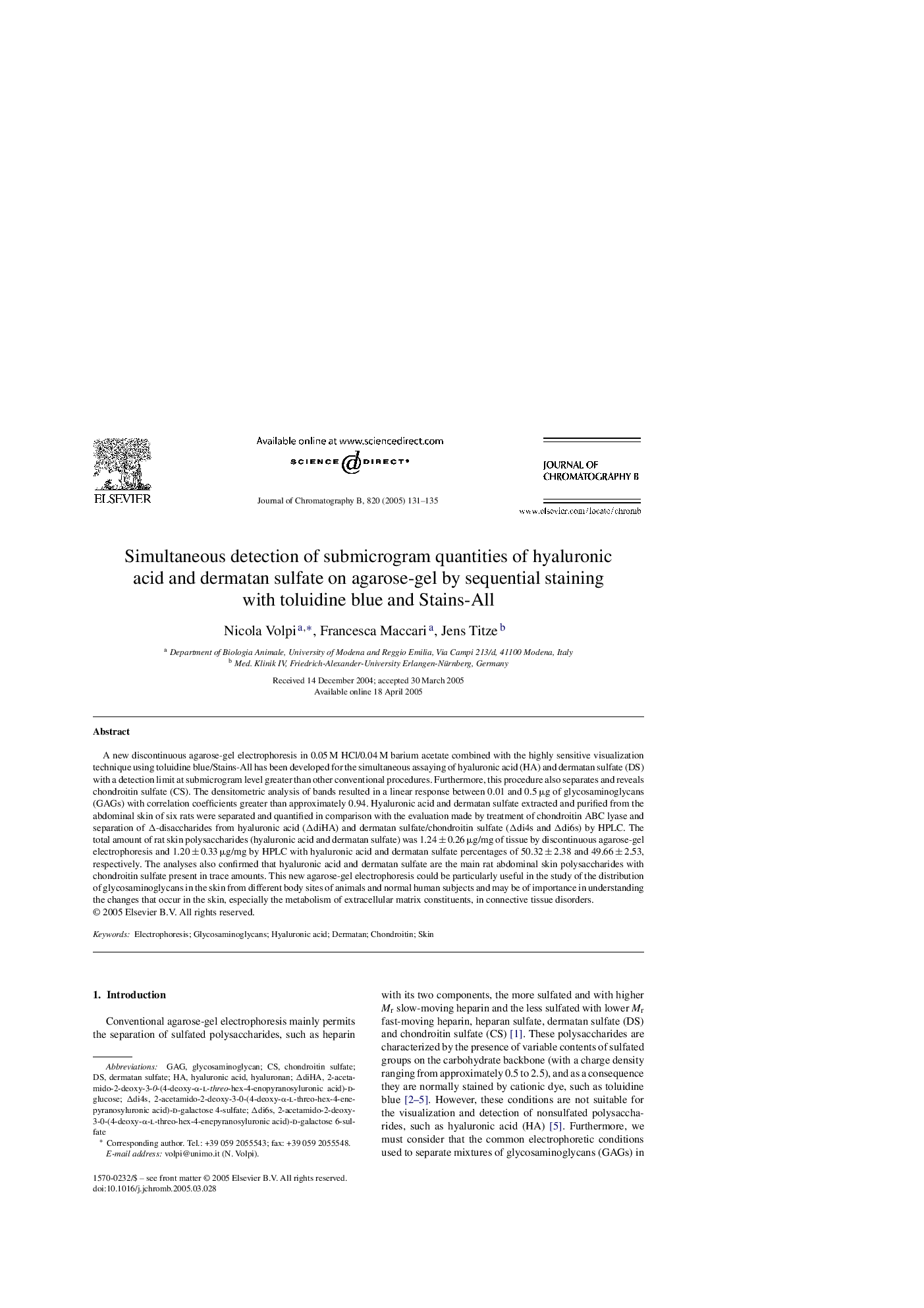| Article ID | Journal | Published Year | Pages | File Type |
|---|---|---|---|---|
| 10550083 | Journal of Chromatography B | 2005 | 5 Pages |
Abstract
A new discontinuous agarose-gel electrophoresis in 0.05 M HCl/0.04 M barium acetate combined with the highly sensitive visualization technique using toluidine blue/Stains-All has been developed for the simultaneous assaying of hyaluronic acid (HA) and dermatan sulfate (DS) with a detection limit at submicrogram level greater than other conventional procedures. Furthermore, this procedure also separates and reveals chondroitin sulfate (CS). The densitometric analysis of bands resulted in a linear response between 0.01 and 0.5 μg of glycosaminoglycans (GAGs) with correlation coefficients greater than approximately 0.94. Hyaluronic acid and dermatan sulfate extracted and purified from the abdominal skin of six rats were separated and quantified in comparison with the evaluation made by treatment of chondroitin ABC lyase and separation of Î-disaccharides from hyaluronic acid (ÎdiHA) and dermatan sulfate/chondroitin sulfate (Îdi4s and Îdi6s) by HPLC. The total amount of rat skin polysaccharides (hyaluronic acid and dermatan sulfate) was 1.24 ± 0.26 μg/mg of tissue by discontinuous agarose-gel electrophoresis and 1.20 ± 0.33 μg/mg by HPLC with hyaluronic acid and dermatan sulfate percentages of 50.32 ± 2.38 and 49.66 ± 2.53, respectively. The analyses also confirmed that hyaluronic acid and dermatan sulfate are the main rat abdominal skin polysaccharides with chondroitin sulfate present in trace amounts. This new agarose-gel electrophoresis could be particularly useful in the study of the distribution of glycosaminoglycans in the skin from different body sites of animals and normal human subjects and may be of importance in understanding the changes that occur in the skin, especially the metabolism of extracellular matrix constituents, in connective tissue disorders.
Keywords
Related Topics
Physical Sciences and Engineering
Chemistry
Analytical Chemistry
Authors
Nicola Volpi, Francesca Maccari, Jens Titze,
